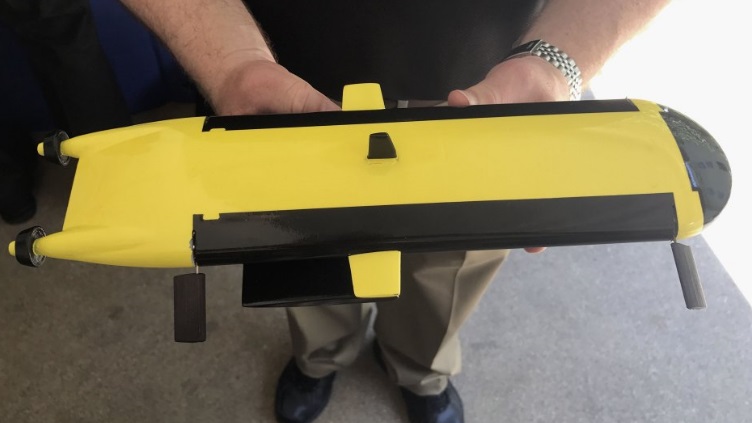
US Naval Undersea Warfare Center (NUWC) is testing a new minehunting unmanned underwater vehicle (UUV) that uses biomimetics that imitate sea life.
Initially designed to interdict swimmer/diver threats, the Razor mine-hunting UUV is enabled with low-speed manoeuvrability and higher speed cruising capabilities to survey broad areas or interrogate localised areas for buried mines, Richard Berube, an autonomous undersea vehicle subject matter expert in the Unmanned Undersea Vehicles (UUV) division, NUWC, told Jane's on 18 May at the Pentagon.
Razor is about 3 m long, two-man portable, and has an acoustic sonar sensor, magnetometer, and a changeable payload. Razor has co-ordinated control between its four high-lift, flapping fin-like foils and two aft propeller thrusters. At low speeds the foils provide manoeuvrability and hovering, and at higher cruising speeds the foils act as control surfaces.
The flapping fins emulate animal behaviour, such as bird and turtles. Combined with the 6-DOF platform control, this enables Razor to stop, hover, and translate about detected targets of interest. "These foils ... allow me to hold any aspect I want with this vehicle," Berube said. He explained that looking top down on a potential mine only provides two dimensional interrogation, while Razor can change attitude to position itself at, for instance, a 45-degree angle and swim around the target to capture a three-dimensional picture without having to incorporate a heavier or more powerful sonar.
The payload capacity of Razor runs along its flanks as the original design was enabled with mini-torpedoes that are no longer needed. These empty spaces in the foil cans can be used to add components and lead to versatility in the future design.
Berube also explained that the designers were experimenting with moving the aft thrusters to the flanks in future designs to provide even more versatility in sensor placement and antenna mast placement.
http://www.janes.com/article/70659/us-nuwc-tests-biomimetic-minehunting-uuv-prototype
